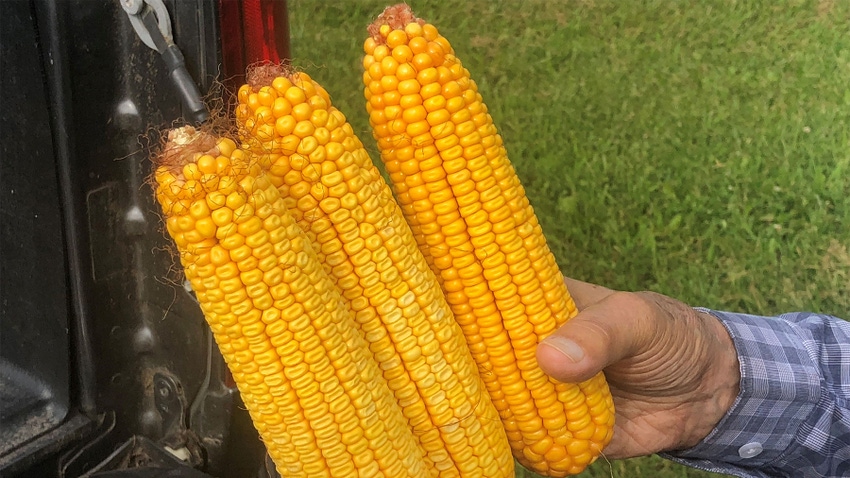
Early reports indicate strong corn yields in the eastern Corn Belt. Some find that surprising because the season was so dry, with true drought early and late. One secret to respectable yields may be ear length, with more kernels per row compared to 2022. The 2022 season also featured a drought, but timing was different than in 2023.
“The drought last year extended further into July,” explains Dave Nanda, director of genetics for Seed Genetics Direct, sponsor of Corn Watch ’23. “Some areas didn’t receive rain until the last week of July in 2022, but then it rained the rest of the year. In 2023, it was very dry in late May through June, but rain was plentiful in many areas from early July through mid-August. Dry weather returned earlier in ’23 than it did in ’22.”
The differences in weather patterns between the two years caused different impacts because of when corn makes key decisions. Corn plants were still deciding length of ear when rains returned in ’23. However, in ’22, those decisions were made before rainy weather returned.
“We found 34 to 36 kernels per row in ’22, but we found 40 to 42 kernels per row this year,” Nanda says. That’s a 15% increase, which translates into 15% more kernels per ear in ’23.
Conversely, grain fill was excellent in ’22, producing more kernel weight and larger kernels. The grain fill period during ’23 was a mixed bag, with ample rain early but drought over the second half.
“Some hybrids handled late dry weather better than others,” Nanda says. “Those hybrids that filled kernels properly will yield well, while hybrids where some kernels aborted late and others didn’t plump up will likely see a yield hit.”
Row length matters
Here is how the math shakes out on kernel length. In these two examples, using the standard yield formula outlined in the Purdue Corn & Soybean Field Guide, the only factor that changes is length of ear, represented by number of kernels per row.
2022 example. Suppose there were 32 ears per 17 feet, 5 inches of row, representing 1/1,000 acre in 30-inch rows. That’s a final population of 32,000 plants per acre. There were 16 rows of kernels per ear and 34 kernels per row. The fudge factor representing kernel size was 85.
The formula is: Ears times kernel rows times kernels per row equals number of kernels per acre, divided by number of kernels per bushel on volume basis equals dry yield per acre.
The math is: 32 × 16 × 34 = 17,408 ÷ 85 = 205 bushels per acre.
2023 example. Here is the same math, except this year, average kernels per row climbed to 40 instead of 34. Use the same fudge factor. Note that if late dry weather produced smaller kernels, the fudge factor would be higher, and final yield would be lower.
The math is: 32 × 16 × 40 = 20,480 ÷ 85 = 241 bushels per acre. That’s a 36-bushel-per-acre increase over 2022, due solely to more kernels per row. There are 15% more kernels, and the yield estimate is 15% higher.
About the Author(s)
You May Also Like




